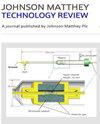Extension of a Zero-Dimensional Mixing-Controlled Combustion Model for the Development of a NOx–Free System Based on the Oxy-Combustion Concept
IF 2
4区 化学
Q4 CHEMISTRY, PHYSICAL
引用次数: 0
Abstract
Oxy-combustion is a promising concept to achieve an extremely clean combustion, independently of the fuel type, because, on the one hand, it is a NOx-free combustion and, on the other hand, the CO2 produced during combustion can be easily captured once the water vapor is removed from the exhaust gases stream, consequently allowing also carbon neutral operation. An existing 0D, mixing-controlled combustion model, developed for a standard diesel combustion scenario, has been adapted to the oxy-fuel combustion scenario. Initially, the model over-predicted the heat release at the end of the combustion process. The main model adaptation was to modify the relationship between the average YO2 and the effective YO2 (i.e. the one of the charge actually entrained by the spray), to be consistent with the significant increase in compression ratio needed in the oxy-fuel context. As a result, a model able to correctly predict the combustion behaviour at any operating condition has been obtained, which finally represents a very suitable tool to assist in the concept development.基于全氧燃烧概念的无nox系统开发的零维混合控制燃烧模型的扩展
氧燃烧是一个很有前途的概念,可以实现非常清洁的燃烧,与燃料类型无关,因为一方面,它是一种无nox的燃烧,另一方面,燃烧过程中产生的二氧化碳可以很容易地捕获,一旦水蒸气从废气流中除去,因此也允许碳中和操作。现有的0D混合控制燃烧模型是为标准柴油燃烧场景开发的,已经适应了全氧燃料燃烧场景。最初,该模型过度预测了燃烧过程结束时的热量释放。主要的模型调整是修改平均YO2和有效YO2(即喷雾实际携带的电荷之一)之间的关系,以与纯氧燃料环境中所需的压缩比的显着增加保持一致。因此,一个能够正确预测在任何工况下燃烧行为的模型已经获得,这最终代表了一个非常合适的工具来协助概念的发展。
本文章由计算机程序翻译,如有差异,请以英文原文为准。
求助全文
约1分钟内获得全文
求助全文
来源期刊

Johnson Matthey Technology Review
CHEMISTRY, PHYSICAL-
CiteScore
4.30
自引率
4.30%
发文量
48
审稿时长
12 weeks
期刊介绍:
Johnson Matthey Technology Review publishes articles, reviews and short reports on science enabling cleaner air, good health and efficient use of natural resources. Areas of application and fundamental science will be considered in the fields of:Advanced materials[...]Catalysis[...][...]Characterisation[...]Electrochemistry[...]Emissions control[...]Fine and speciality chemicals[...]Historical[...]Industrial processes[...]Materials and metallurgy[...]Modelling[...]PGM and specialist metallurgy[...]Pharmaceutical and medical science[...]Surface chemistry and coatings[...]Sustainable technologies.
 求助内容:
求助内容: 应助结果提醒方式:
应助结果提醒方式:


